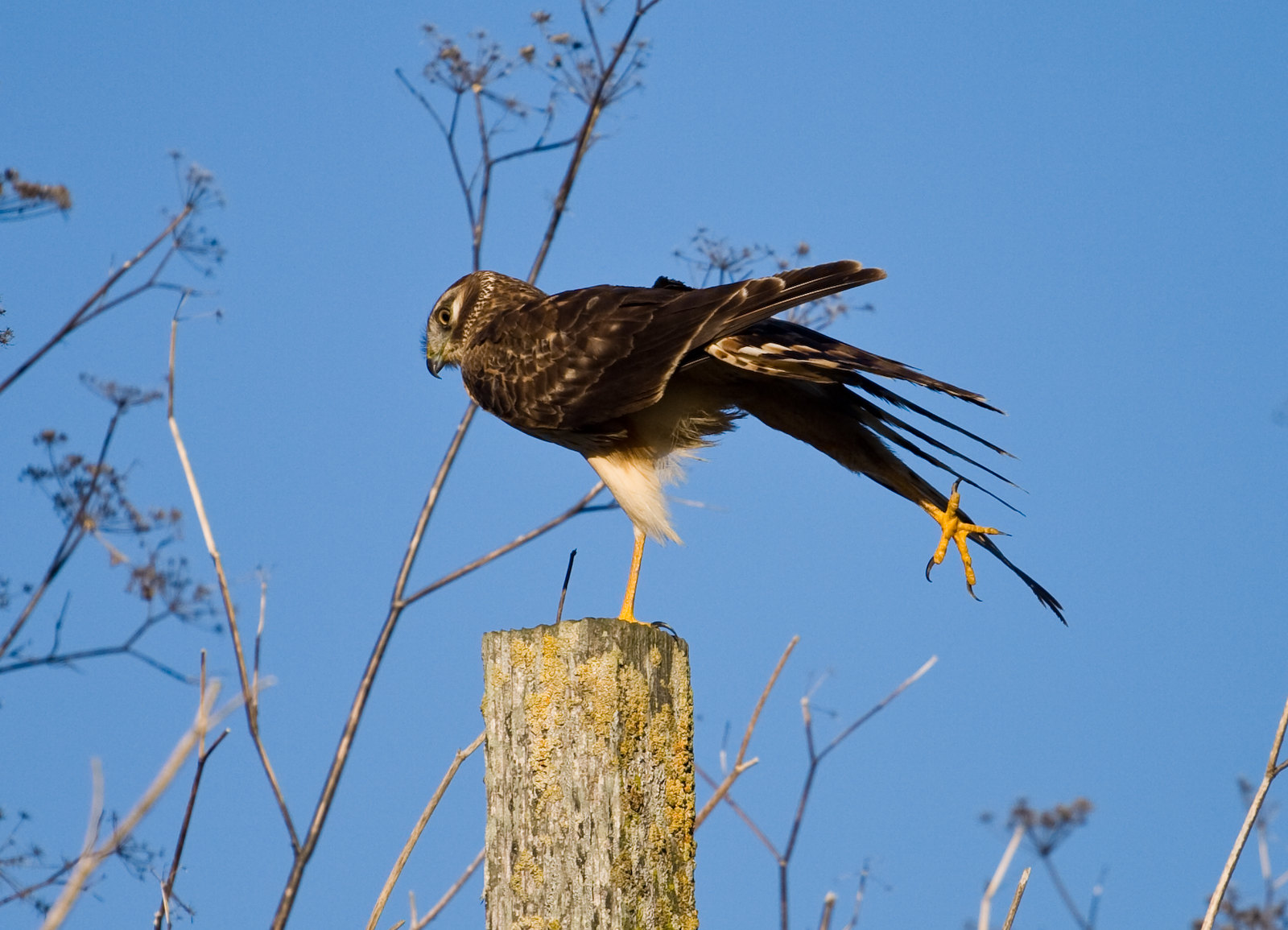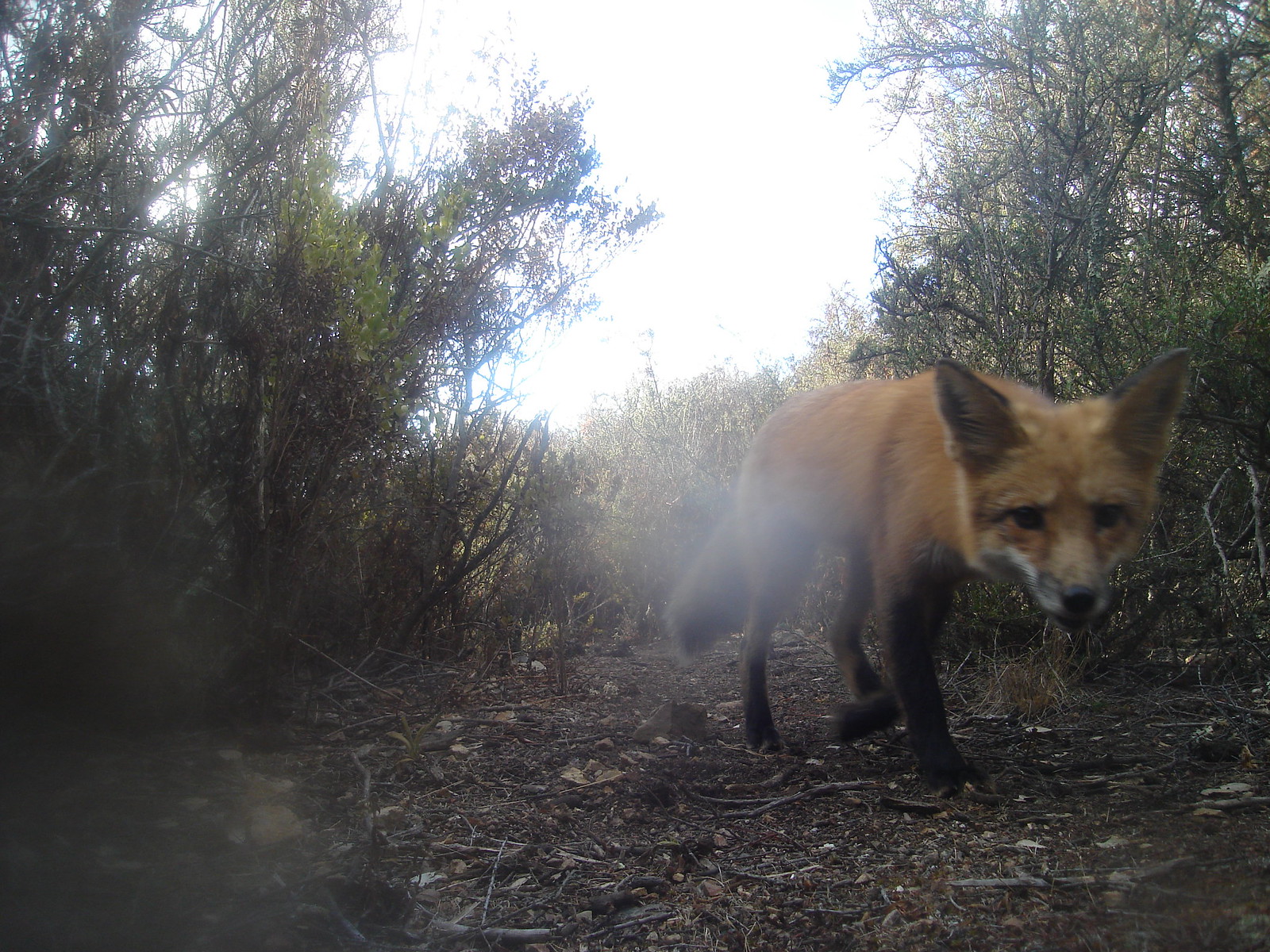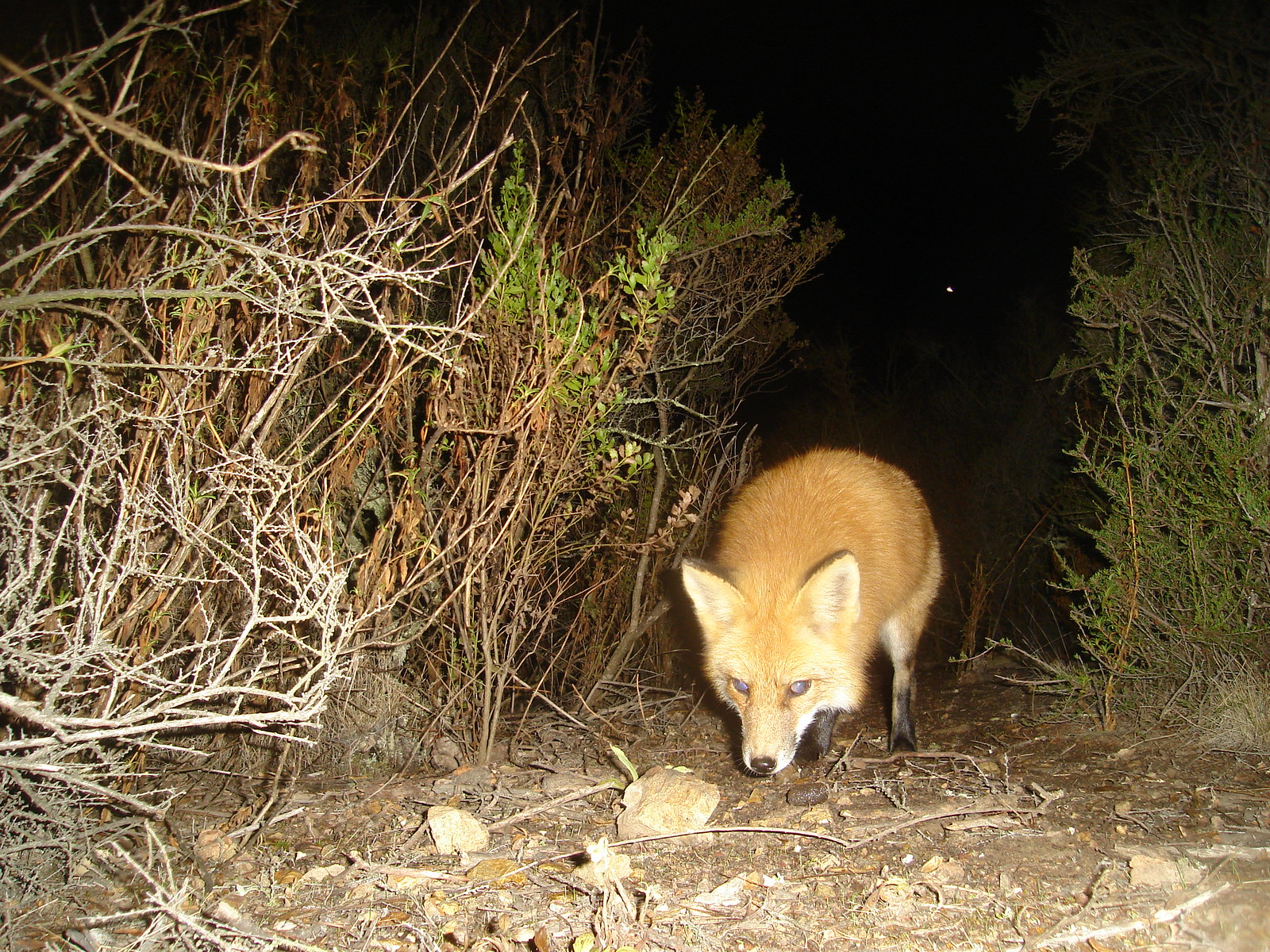 |
| This fine beast or beastress comes to you from the Santa Cruz Mountains and deserves a Haiku Look at that hamstring I am going with Beastress Fine bitch specimen |
Title Image

About:
This blog is predominately about camera trapping in California. We camera trap to save our souls and to teach primary school students about biology and conservation. We will also touch on other camera trapping news and musings, sets from afar, mediocre herpetology, sucky birding, and other natural history discussions.
Friday, December 28, 2012
Friday Coyote Blogging
Thursday, December 27, 2012
Workout Plan
The holidays can often lead to overindulgence of food and drink.
Remaining active is key during these festive times.
Best to stick with the basics; running and leaping -- and don't forget to stretch!
Remaining active is key during these festive times.
Best to stick with the basics; running and leaping -- and don't forget to stretch!
Saturday, December 22, 2012
Learning and Playing
Here are a few pictures of some raccoons, Procyon lotor, from the Santa Cruz Mountains that I got in the Fall. The main group of raccoons that came by the camera were a mother and her two offspring. They walked up and down the creek, faces up and paws dragging the bottom feeling for yummy critters to catch and eat.




I know that was a lot of raccoon pictures. More than most sane people would want to look at, but these are only a fraction of the ones I could have posted.


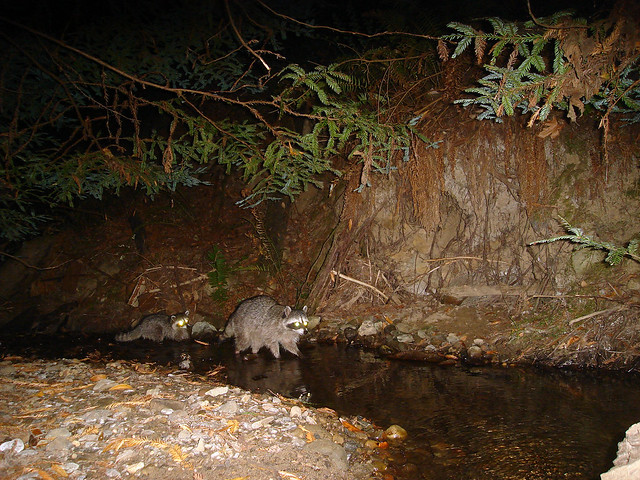 |
| Notice the "I am trying to concentrate" look on the young one's face. |


 |
| Inspecting the camera |
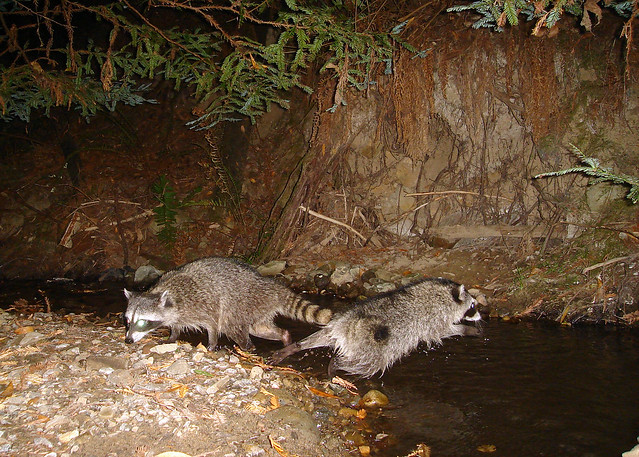 |
| Cannonball!!! This is one of my favorite images of the past year |
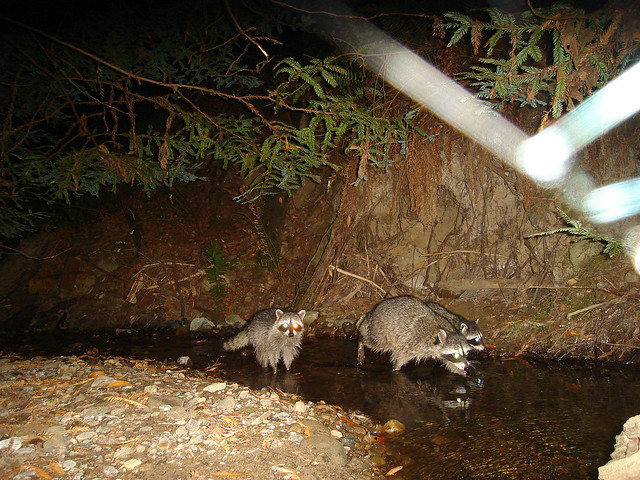 |
| Just to illustrate that sometimes the 8-legged critters find your camera a wonderful place to set-up shop. This usually leads to the camera trap blues. |
I know that was a lot of raccoon pictures. More than most sane people would want to look at, but these are only a fraction of the ones I could have posted.
Tuesday, December 18, 2012
Holiday Harrier
Friday, December 7, 2012
Tuesday, November 20, 2012
The Red and the Gray
Obviously, I am going to continue writing about foxes.
Here in the Bay Area we have two species of fox:
The native gray fox (Urocyon cinereoargenteus), is a mesopredator that has been a constant presence in my Marin County sets, whether deep in redwood/fir forests, throughout maritime chaparral or, the edges of suburbia. It is a handsome creature that I have gown fond of over the past few years.
The red fox* (Vulpes vulpes), an alien from the east that was was introduced to California by hunters or escaped from commercial fox farms and probably descended from stock introduced from the Midwest (Red foxes studied in the Sacramento Valley are more like red foxes (V. v. regalis) from the Northern Great plains) -- possibly as early as construction of transcontinental railroad post-Civil War . These alien red foxes soon spread to southern, coastal central and northern California. They are as crafty and adaptable as their cousins, but have not penetrated the forests nearly as much, due to their lack of tree-climbing skills.
Up until this September I had never seen a red fox in California.
As a pretty much lifelong resident of the Bay Area, the majority of my explorations had been in native Sonoma County and nearby Marin, Napa and San Mateo Counties. This summer I began to explore the outdoors of my new residence in the East Bay. In the Oakland Hills, I quickly discovered a wonderful spot that is relatively unknown and quite feral when compared with parks such as Tilden and Huckleberry that are well visited.
As our awesome Indian Summer arrived in full force, I introduced camera traps in my explorations of this park and on my second visit, I caught a glimpse of a red fox quickly fleeing into the oak woods at dusk. They were soon to be frequent visitors to my cameras.
There is not a consensus over the relationship between competing red and gray foxes, though many believe that the reds drive out the grays from more open, treeless habitat. If this is true, then it was nice to see several appearances of the gray fox.

Now, what could explain the lack of previous red fox sightings, especially in Marin, where I have camera trapped for three years?

Now, what could explain the lack of previous red fox sightings, especially in Marin, where I have camera trapped for three years?
As the red fox spread through California, their tremendous impact could be seen with a few sensitive species, most notable the endangered and beloved California Clapper Rail. A delicate saltwater marsh resident, its decline accelerated in the 1980s with the arrival of the red fox.
A predator management plan was put into place for the San Francisco Bay in the early 90s which include the use of non-lethal (barriers, live trapping) and lethal measures (when necessary, selectively and humanely). The plan was deemed a success and continued with slight adjustments in 2011.
Much of Marin is connected to these marshes, patrolled by larger predators such as coyote and mountain lion and otherwise is the type of dense forest that is realm of the tree-climbing gray fox.
In the East Bay, the wildlife corridors down from the hills to the wetlands are not as present as in Marin and perhaps trapping and lethal measures were not deployed as much. This is conjecture, for I was unable to find data on specific locations where these measures were used. I also know that there are significant clapper rail populations in Marin (Las Gallinas) and Southern Petaluma, while a smaller population resides in Alameda County (MLK Shoreline).
* The threatened Sierra Nevada Red Fox (V. v. necator) is native to California
Sources:
Foerster, K.S., Takekawa, Jean E., Strong, Cheryl M. “San Francisco Bay National Wildlife Refuge Predator Management Plan” US Fish and Wildlife Service March 1991, Modified November 2011
Lewis, Jeffery S., Sallee, Kevin L. and Golightly, Richard T. “Introduced Red Fox in California” 1993 CA DFG
Friday, November 16, 2012
Story of a Death Foretold
The Codger has a post up on a Tracking Whodunnit that is getting some good comments.
I have actually had this post in the draft box for a few days so it seemed like a great time to get it finished and posted. I was not intending it to be a quiz post, because I think this one is much easier than the Codge's.
This was a carcass we found in the Mono Basin earlier this Fall. Habitat was on the edge of a wetland. The likely predator should be about as easy as the prey.


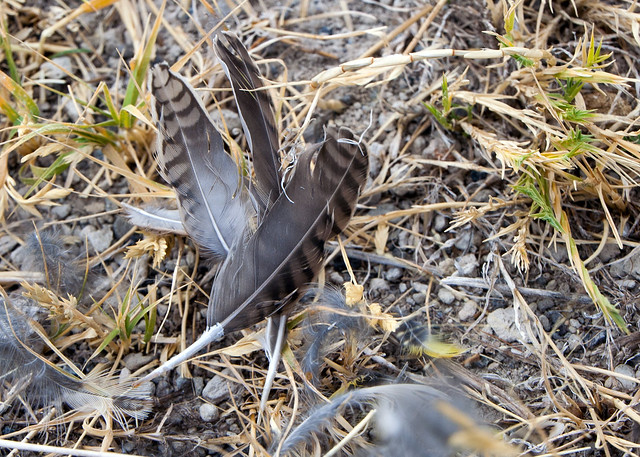
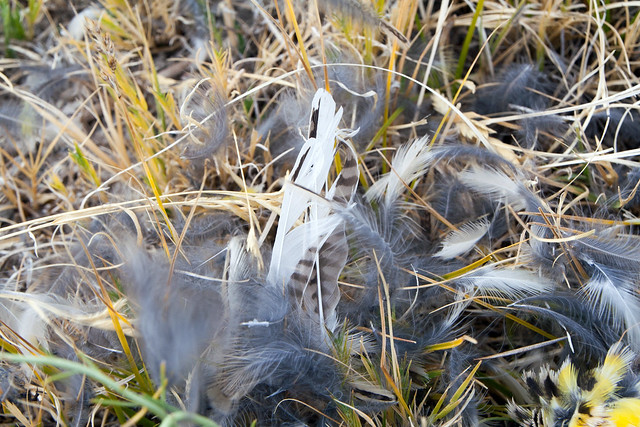
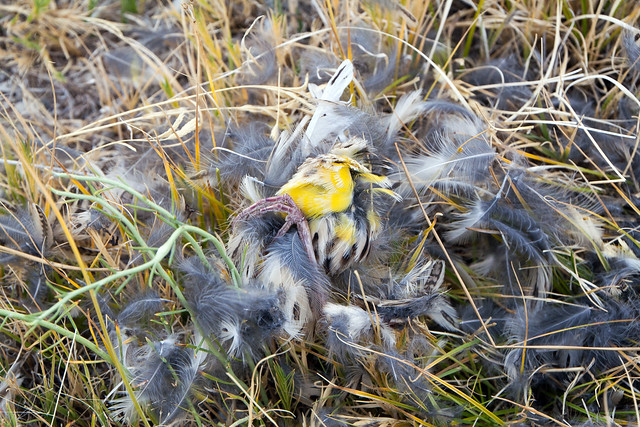
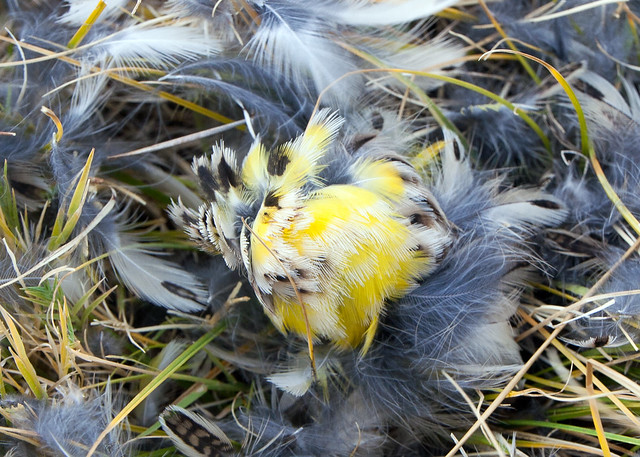
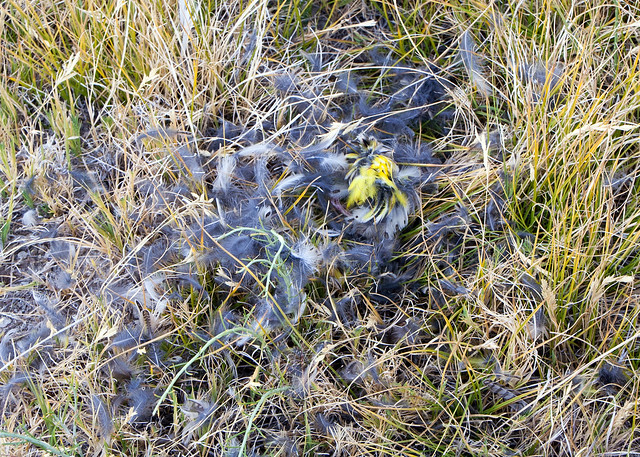
I will say this. Birding is much easier when you get one of the little bastards in hand. Maybe that is why I like herping so much. You can get them in hand and take the time to key them out. My brain might not process fast enough for birds. No wonder the early guys orinthologists birded with shotguns.
I have actually had this post in the draft box for a few days so it seemed like a great time to get it finished and posted. I was not intending it to be a quiz post, because I think this one is much easier than the Codge's.
This was a carcass we found in the Mono Basin earlier this Fall. Habitat was on the edge of a wetland. The likely predator should be about as easy as the prey.







I will say this. Birding is much easier when you get one of the little bastards in hand. Maybe that is why I like herping so much. You can get them in hand and take the time to key them out. My brain might not process fast enough for birds. No wonder the early guys orinthologists birded with shotguns.
Sunday, November 11, 2012
Fox Frenzy / IN SEARCH OF
JK recently posted about finally joining the Aplodontia Club, and with some sweet captures, if I might add. For myself, I have fruitlessly been knocking on the door of the Marin Cougar Club -- and I am not talking about the wine bars of San Anselmo (I have already been).
One would think that it would not be a ridiculous task, but here I am again, with only bobcat and fox images. And the foxes are aplenty.
These shots are from the JENGA location in Mt. Tam Watershed, except I moved the camera to the other side of the trail fork with a ~45 degree angle rather than the 90 degree side view.
Fox images totalled 40 out of 103 captures, with 14 unique visits over 38 days.
A few other non-Mountain Lions dropped by:
As much as it pains me, I might have to move from this location unless signs of the Shadow Cat become apparent.
Next post, I will be in my own backyard across in the East Bay for the first time with camera trap !
Will the foxes follow me?
One would think that it would not be a ridiculous task, but here I am again, with only bobcat and fox images. And the foxes are aplenty.
These shots are from the JENGA location in Mt. Tam Watershed, except I moved the camera to the other side of the trail fork with a ~45 degree angle rather than the 90 degree side view.
 |
| First! |
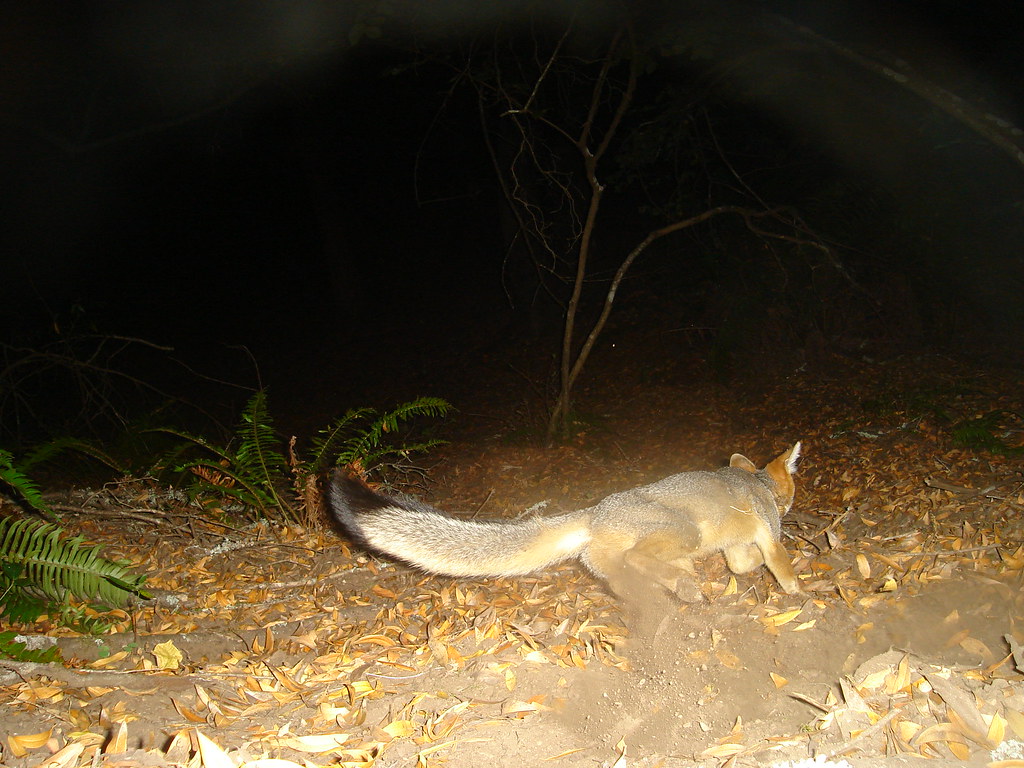 |
| Peeling out / Digging? |
 |
| Coming in for a closer inspection. |
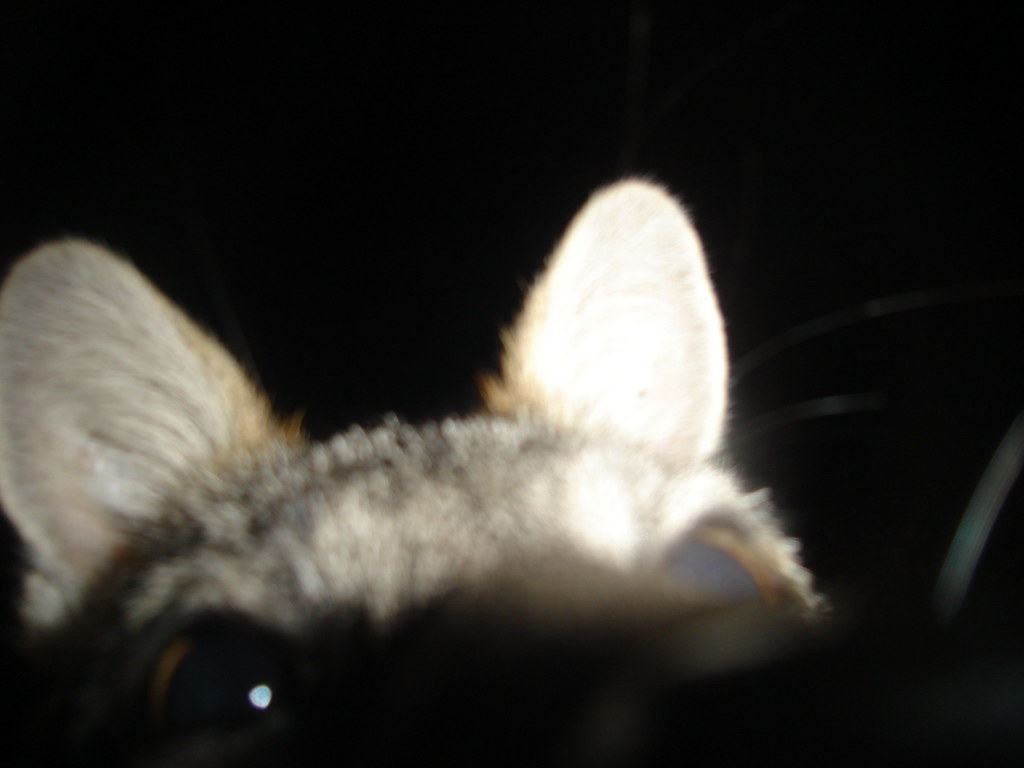 |
| Even closer. |
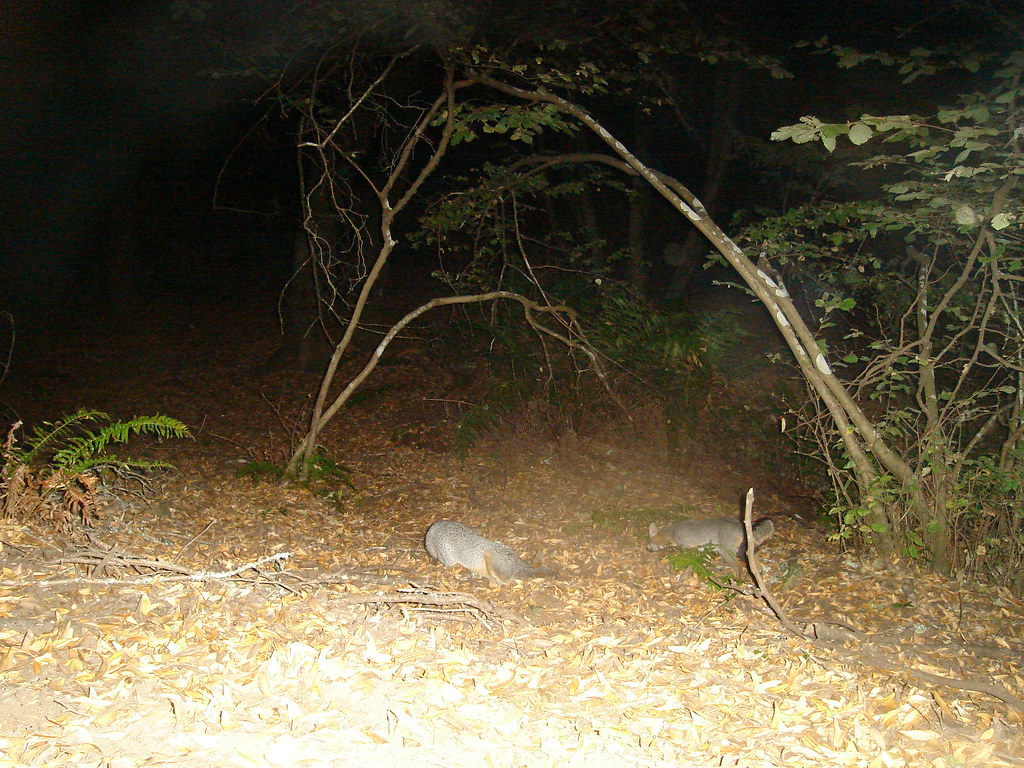 |
| Now a duo. |
 |
| Closer look at this crew |
Fox images totalled 40 out of 103 captures, with 14 unique visits over 38 days.
A few other non-Mountain Lions dropped by:
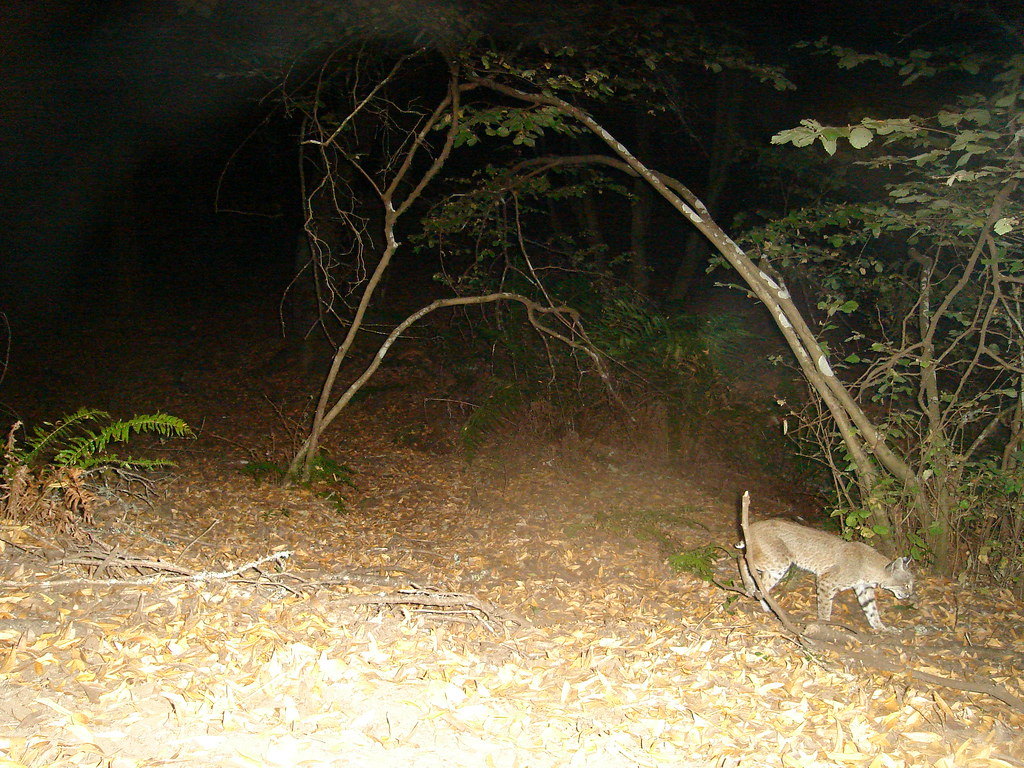 |
| focused Bobcat |
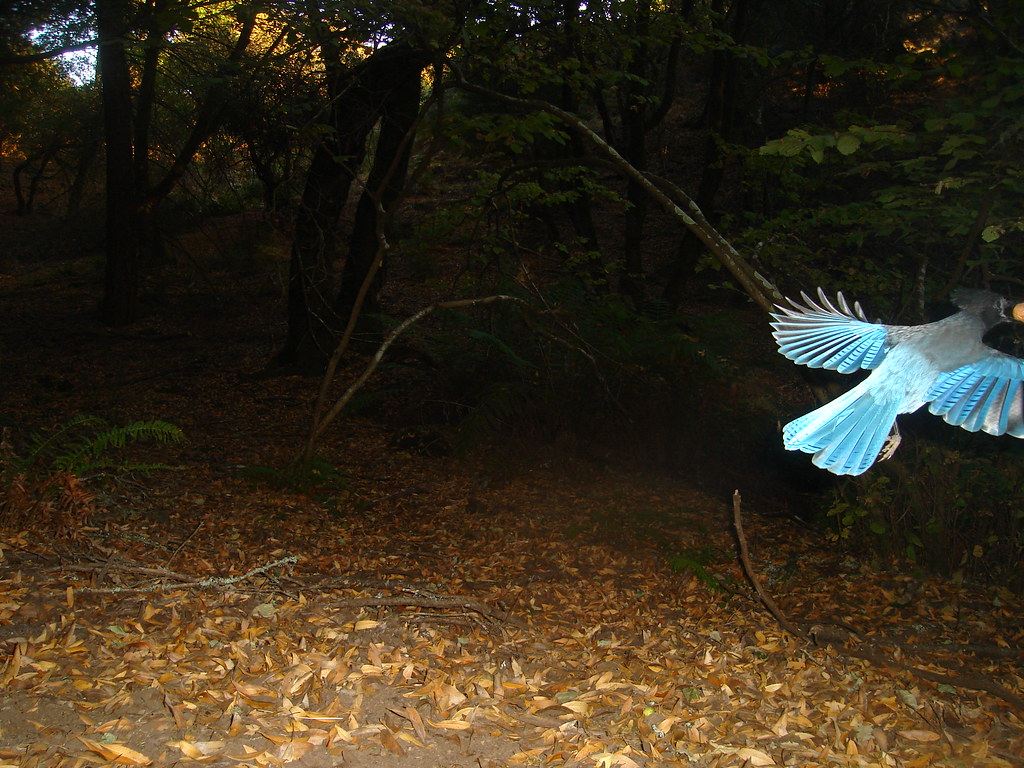 |
| Almost sweet shot of Steller's Jay |
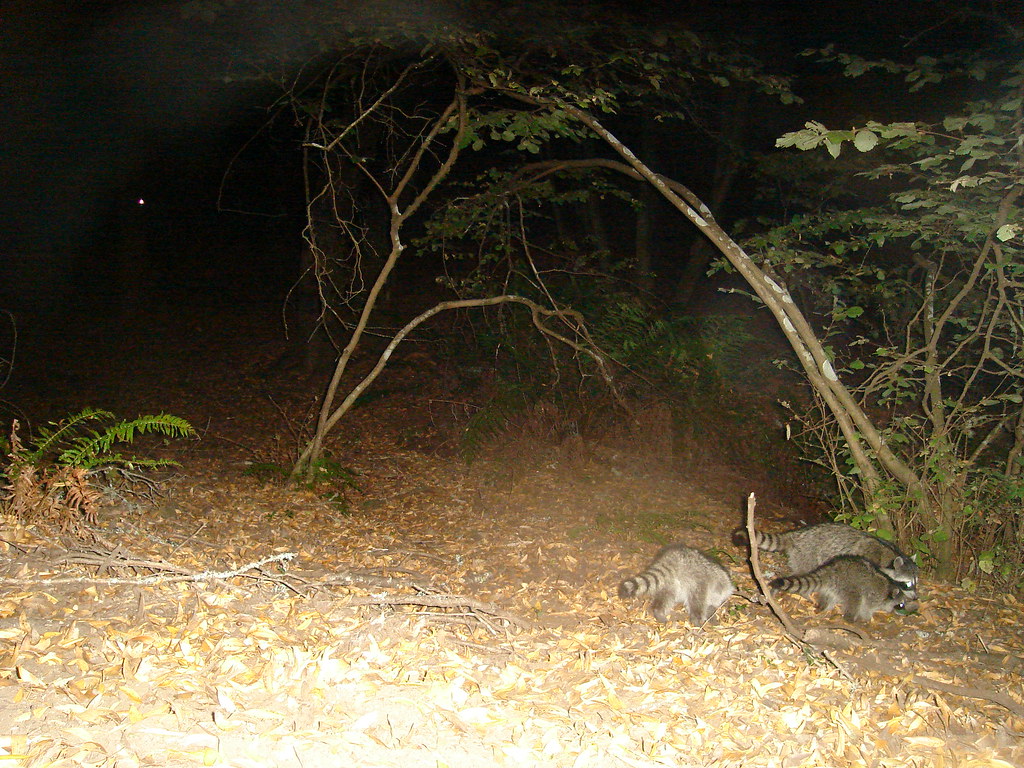 |
| Raccoon Fam |
 |
| Western Gray creating / accessing seed cache. |
As much as it pains me, I might have to move from this location unless signs of the Shadow Cat become apparent.
Next post, I will be in my own backyard across in the East Bay for the first time with camera trap !
Will the foxes follow me?
Tuesday, November 6, 2012
Just a couple of birds
The Aplodontia set didn't only get rodents large and small. No, unfortunately not mustelids, but it did get a few birds.
I present them with little commentary for your viewing pleasure.
The trouble with IDing birds by camera trap is that you might get only one image and be lacking angles to key features used to properly ID the bird. The nice thing about IDing birds by camera trap is that they cannot fly away while you are trying to ID them. I have also found that it is a way to get images of some of the shyer species that like to stay deep in the brush. I have never made a set specifically for passerines, but it might be something to try in the future.
Thanks as always to Seagull Steve for ID confirmations and corrections.
Now all you Americans, be good and go VOTE!
I present them with little commentary for your viewing pleasure.
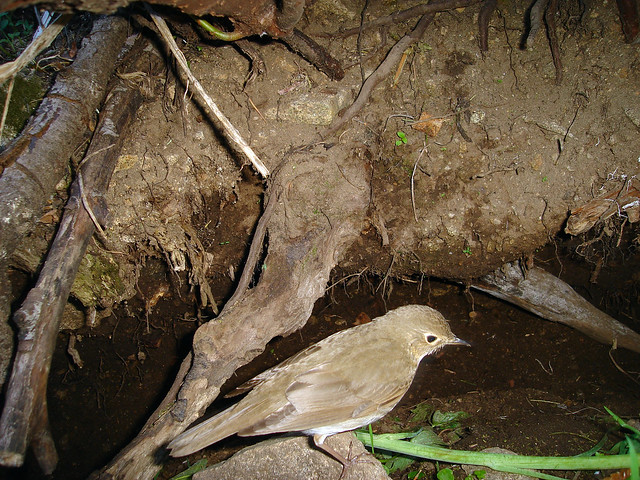 |
| Swainson's Thrush, Catharus ustulatus. First time on camera trap for CTC |
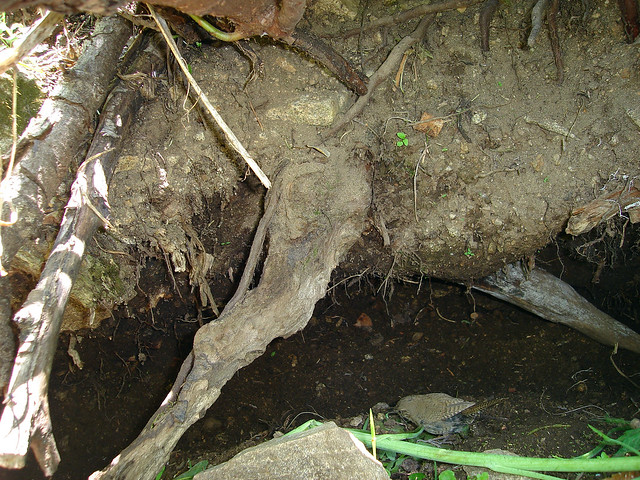 |
| House Wren, Troglodytes aedon. Also first time on camera trap for CTC |
 |
| Crop of above image. This is where the lack of a good angle on the bill led me astray. I thought I saw a lack of yellow on the base of the lower bill which caused me to prematurely eliminate House Wren. But after Seagull Steve corrected me I can now see that this bird has House Wren jizz written all over it. |
The trouble with IDing birds by camera trap is that you might get only one image and be lacking angles to key features used to properly ID the bird. The nice thing about IDing birds by camera trap is that they cannot fly away while you are trying to ID them. I have also found that it is a way to get images of some of the shyer species that like to stay deep in the brush. I have never made a set specifically for passerines, but it might be something to try in the future.
Thanks as always to Seagull Steve for ID confirmations and corrections.
Now all you Americans, be good and go VOTE!
Thursday, November 1, 2012
Battery Suckin' Varmits
Back to the Aplodontia set on the Yuba River this past Summer.
I mentioned that the camera only took pictures for 6 days. Well, that's what happens when you have a little rodent running in front of your camera causing the flash to go off all night long. These guys were using the Aplodontia burrow as a highway. There was nothing left at this location by me that would have attracted mice (ie. no seeds or other food). They did seem to have some interest in the Aplodontia's hay piles.
The major culprit (I believe) was Zapus princeps pacificus (Merriam 1897). Zapus come out of hibernation when the soil temperatures reach 8-9.5°C. These images were from late June after they had come out of hibernation and were busy putting on all the body fat they had lost over winter.
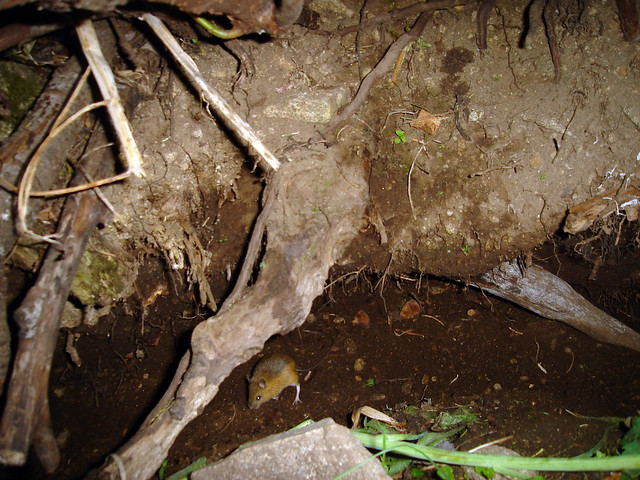
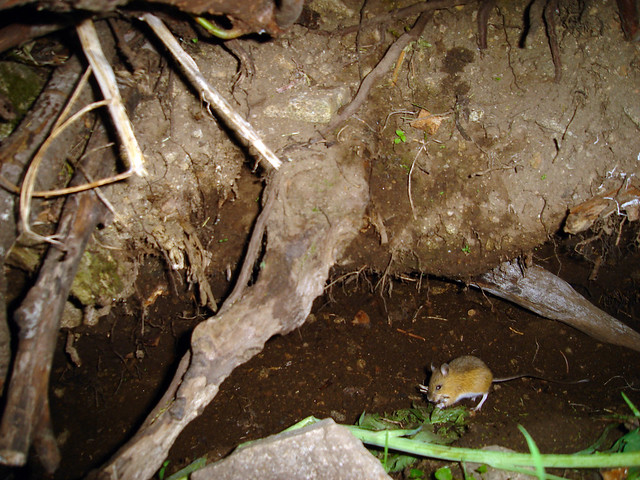

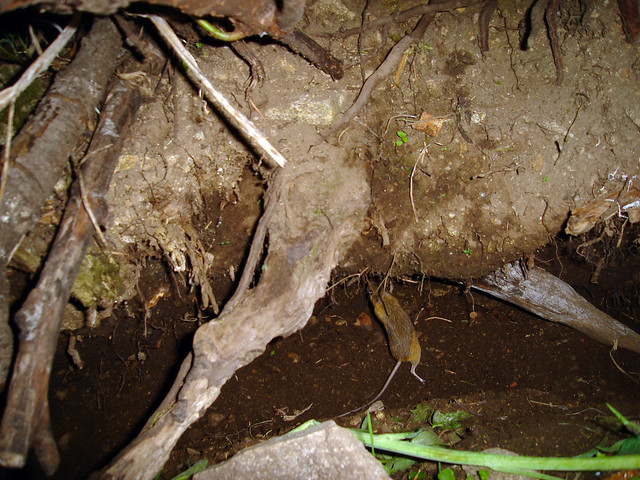
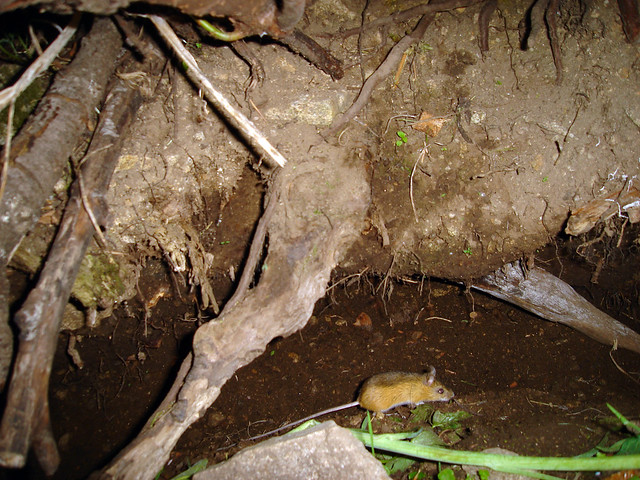
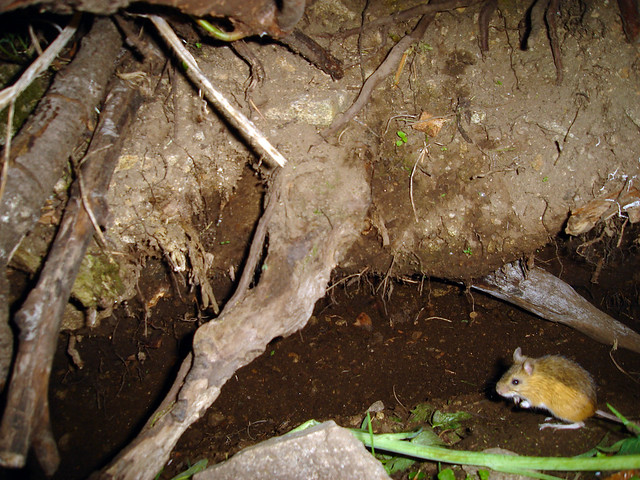
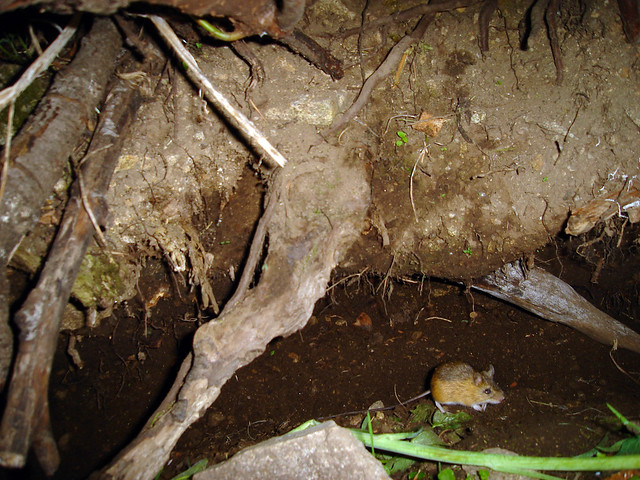
The second culprit below I am a lot less sure about. It is definitely a member of the genus Peromyscus. The huge ears lead me to Peromyscus truei. It could also be P. boylii or P. maniculatus and the large ears are just a juvenile characteristic as the set was also in their range.
The tail does appear shorter than the head and body combined (strike against P. boylii). It is hard to tell because of shadows but the tail may slightly be bi-colored (P. maniculatus should have a sharply contrasting bi-colored tail), but seems to lack any tufts on the end (strikes against boylii and truei adults). P. truei juveniles have a grayer pilage which seems consistent with this individual. Hard to tell from the angles of these pictures but it appears that the hind foot is smaller than the ears (strike against P. truei) and the ears don't appear to be heavily furred (consistent with P. maniculatus). The fur is slightly darker on the dorsal side than the flanks (P. boylii might expect more distinct lateral line, but may be missing in a juvenile). There is extensive white on the belly, legs and ankles (Maybe too much for P. boylii).
So a lot of words to come to no conclusion. We need to look at its teeth and measure its hind foot, but any thoughts from the comment gallery are most welcome. Thanks to the Codger for talking me out of thinking I was sure on this ID.
Hart et al suggest that "Zapus princeps competitively excludes the deer mouse, Peromyscus maniculatus, in the field". If is also the case that it competitively excludes all deer mice then this Zapus is not doing a very good job. Maybe the lack of exclusion has to do with the niche being a Mt. Beaver tunnel rather than a tunnel exclusive to smaller rodents.
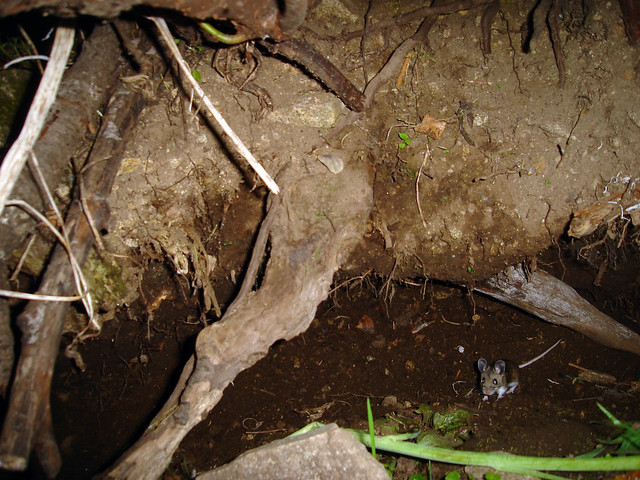
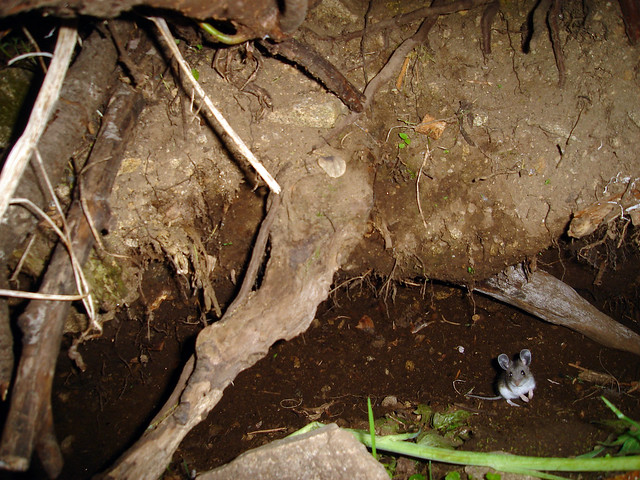
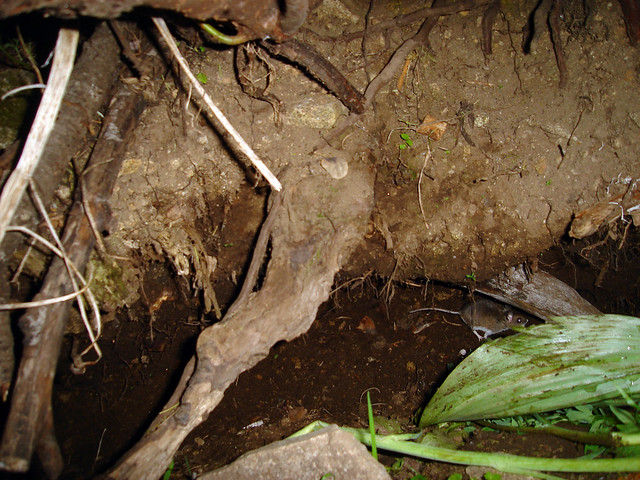
Works Cited:
Hart EB, Belk MC, Jordan E, and Gonzalez MW, "Zapus princeps", Mammalian Species 2004 749, 1-7 [Link]
Merriam CH, "Three new jumping mice (Zapus) from the northwest." Proceedings of the Biological Society of Washington 1897 11:103-104
I mentioned that the camera only took pictures for 6 days. Well, that's what happens when you have a little rodent running in front of your camera causing the flash to go off all night long. These guys were using the Aplodontia burrow as a highway. There was nothing left at this location by me that would have attracted mice (ie. no seeds or other food). They did seem to have some interest in the Aplodontia's hay piles.
The major culprit (I believe) was Zapus princeps pacificus (Merriam 1897). Zapus come out of hibernation when the soil temperatures reach 8-9.5°C. These images were from late June after they had come out of hibernation and were busy putting on all the body fat they had lost over winter.
Zapus princeps most commonly occurs in mesic, montane habitats. It occupies plant communities dominated by alder (Alnus) or aspen (Populus tremuloides), stands of willow (Salix), and meadows where forbs and grasses are abundant. Typically they are found in close proximity to water in areas of dense vegetation along streamsThe above paragraph just about perfectly describes the habitat that these images were taken in. The set was in the undergrowth of an alder thicket, with nearby willows and 50m or so from an open meadow. The Mt. Beaver tunnel had standing water itself and the nearby meadow also has a stream running through it and many flooded plains.

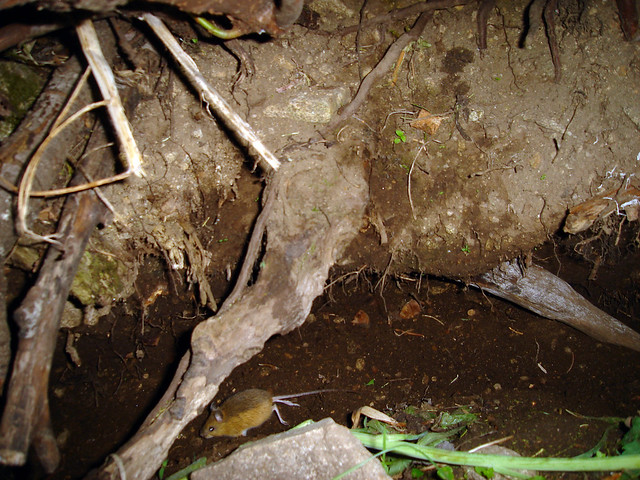 |
| Mid-jump! |


 |
| Bi-colored pilage |
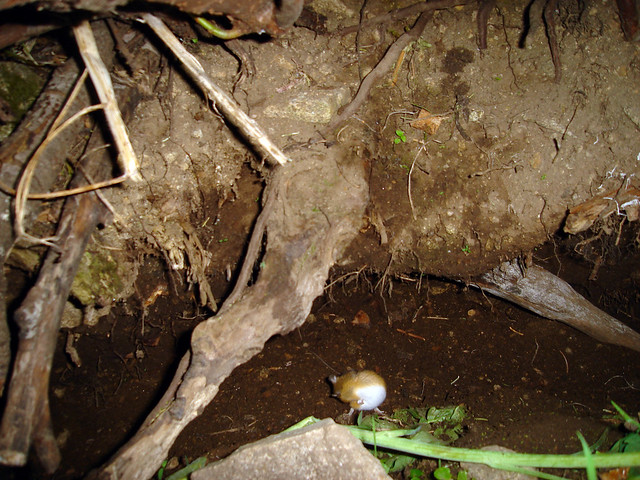 |
| Scratch, scratch, scratch |

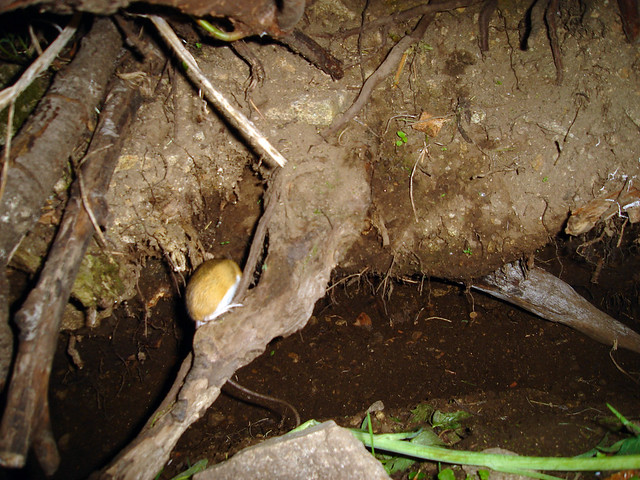 |
| Look how long that tail is. It drags all the way to the ground. |



The second culprit below I am a lot less sure about. It is definitely a member of the genus Peromyscus. The huge ears lead me to Peromyscus truei. It could also be P. boylii or P. maniculatus and the large ears are just a juvenile characteristic as the set was also in their range.
The tail does appear shorter than the head and body combined (strike against P. boylii). It is hard to tell because of shadows but the tail may slightly be bi-colored (P. maniculatus should have a sharply contrasting bi-colored tail), but seems to lack any tufts on the end (strikes against boylii and truei adults). P. truei juveniles have a grayer pilage which seems consistent with this individual. Hard to tell from the angles of these pictures but it appears that the hind foot is smaller than the ears (strike against P. truei) and the ears don't appear to be heavily furred (consistent with P. maniculatus). The fur is slightly darker on the dorsal side than the flanks (P. boylii might expect more distinct lateral line, but may be missing in a juvenile). There is extensive white on the belly, legs and ankles (Maybe too much for P. boylii).
So a lot of words to come to no conclusion. We need to look at its teeth and measure its hind foot, but any thoughts from the comment gallery are most welcome. Thanks to the Codger for talking me out of thinking I was sure on this ID.
Hart et al suggest that "Zapus princeps competitively excludes the deer mouse, Peromyscus maniculatus, in the field". If is also the case that it competitively excludes all deer mice then this Zapus is not doing a very good job. Maybe the lack of exclusion has to do with the niche being a Mt. Beaver tunnel rather than a tunnel exclusive to smaller rodents.
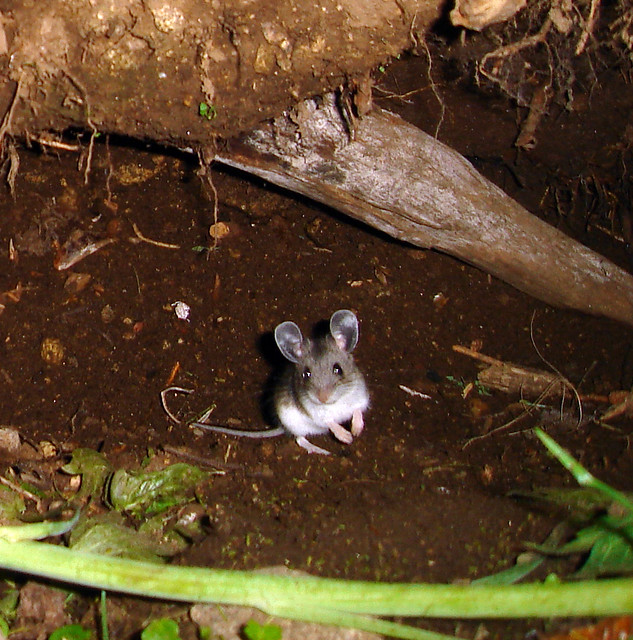 |
| Cropped image. Could probably hear the campus mess hall 400m away with those ears |
 |
| Tail considerably shorter than head + body. Hard to tell if it is bi-colored or just a shadow |
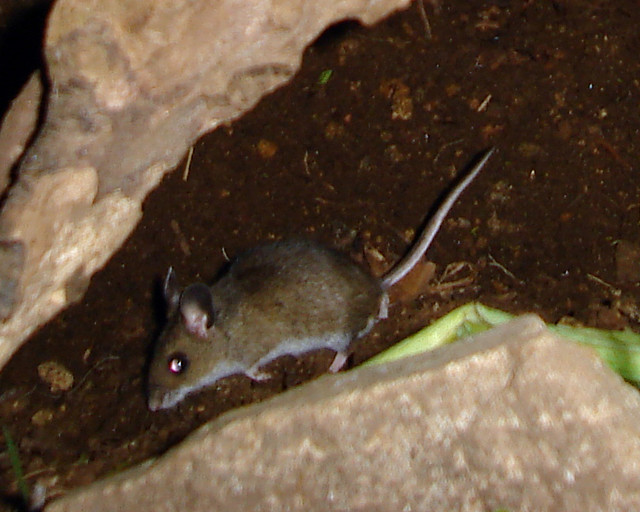 |
| Appears from this angle that the tail may be slightly bi-colored, but again may be a shadow. |


 |

Works Cited:
Hart EB, Belk MC, Jordan E, and Gonzalez MW, "Zapus princeps", Mammalian Species 2004 749, 1-7 [Link]
Merriam CH, "Three new jumping mice (Zapus) from the northwest." Proceedings of the Biological Society of Washington 1897 11:103-104
Subscribe to:
Posts (Atom)
